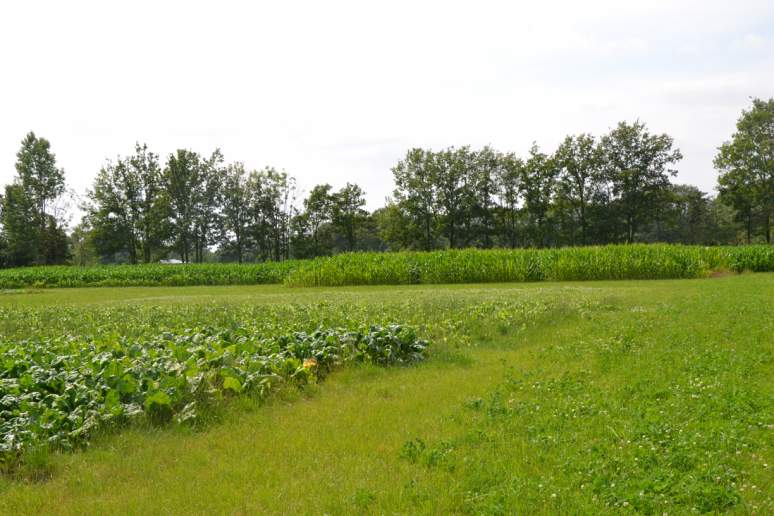Carbon
A monoculture (for example with maize) can reduce the soil carbon capacity. With a diverse rotation of crops (cover crops, croprotation,..) the carbon capacity of the soil can be increased. An increased carbon capacity has many advantages; soil fertility will increase, the water capacity will increase (reduced risk of water-erosion and an increased resilience of the soil against droughts), increased soillife, increased soil structure...
Pest control
A more diverse rotation or smaller areas of crops on a farm are less at risk of infestation or infection than large areas of the same crop. A good rotation prevents the build up of plant pathogens and weeds by disrupting their life cycles through different growth habits, planting dates and control methods whether chemical or mechanical.
Crop rotation (Picture: Hooibeekhoeve)
Weed control
Different crops have different weed risks and different management strategies so that a long rotation allows many different techniques to be used, this reduces the risk of one weed becoming dominant.
More information: Crop rotation and its ability suppress perennial weeds (Agricology) (English)
Leaching of elements
With a smart crop rotation you can decrease the risk of leaching of nutriënts. Fodder beets for example, in a foddercrop rotation, have a long growing season. This leads to a higher uptake of nitrogen during the season, then for example maize or grass. After tearing up grassland, fodder beets are thus a good choice to reduce the risk of nitrogen leaching.
Fodder beets are a good choice after tearing up grassland (Picture: Hooibeekhoeve)
Financial issues
Some of the benefits of rotation are uncosted-such as spreading of workloads and less time pressure at planting and harvest. There are also crop health benefits associated with healthier soils. Others benefits such as reduced Nitrogen fertiliser in cereals after beans increase whole rotation profitability. A good rotation should also reduce weed pest and disease burdens, reducing costs of control and reducing risk of developing resistance to agrochemicals if used. Increased crop diversity also allows increased resilience to market pressures.
